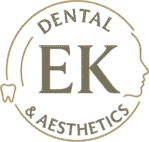
What is PRP?
Platelet-Rich Plasma (PRP) is a concentration of platelets derived from whole blood. Platelets are a type of blood cell that helps with healing by releasing growth factors and other proteins that support tissue repair and regeneration.
How does PRP work?
Platelets in PRP release growth factors such as:
- Platelet-Derived Growth Factor (PDGF)
- Transforming Growth Factor (TGF)
- Vascular Endothelial Growth Factor (VEGF)
- Epidermal Growth Factor (EGF)
These growth factors:
- Stimulate cell growth
- Promote collagen production
- Enhance blood flow
- Reduce inflammation
- Accelerate tissue repair
Uses of PRP
PRP is used in various medical fields:
Dermatology and Aesthetics
- Hair restoration: Stimulates dormant hair follicles
- Skin rejuvenation: Known as the "vampire facial"
Dentistry
- Helps healing after dental surgeries and implants
Sports Medicine
- Common among athletes for faster recovery
Treatment plan
- Each session lasts around 60 minutes.
- Usually requires 3 to 4 sessions 1 month apart.
- Maintenance: 6-18-24 months.
Advantages of PRP
- Minimally invasive
- Uses the patient's own blood (autologous), reducing risk of allergic reaction
- Natural healing mechanism
Risks and Considerations
- Mild pain or swelling at the injection site
- Results vary depending on the condition being treated
